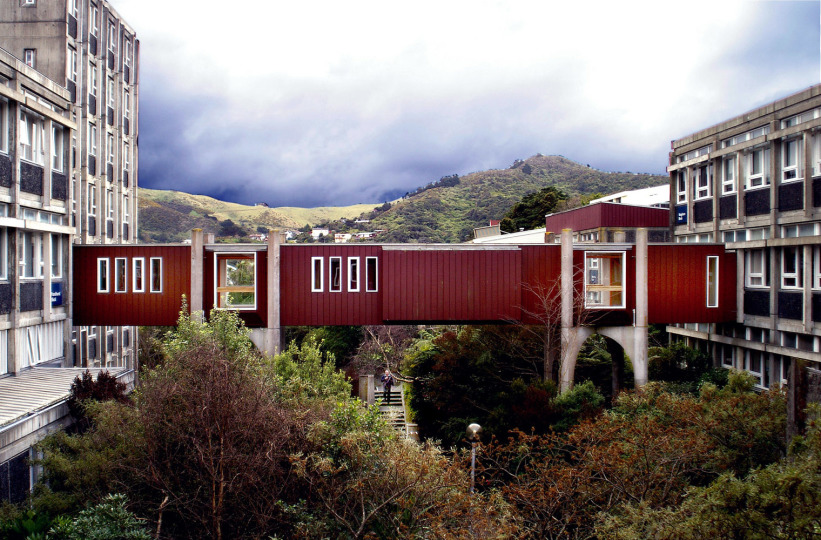Stanley William ŌĆ£BillŌĆØ Toomath: Wellington Teachers Training College (later: Karori Campus, Victoria University), 1962D–1975
- Wellington, New Zealand, Show on map
- #EDU #Oceania
-
In order to respect the scale of the residential neighborhood, the design avoided a large, obtrusive block and ensured all buildings were no higher than the existing houses at site boundaries. A structural grid of 4.9 meters (sixteen feet) ensures an underlying aesthetic continuity. Elevational delectation occurs with layered infilling of the resulting 4.9 ├Ś 3.7 meter (16 ├Ś 12 foot) frame from a rich menu of raw, indigenous concrete: smooth, off- white, gray, dark basalt aggregate, precast, cast in situ, board-marked, ribbed, and hacked. A desire for low-maintenance underpinned the brief.┬ĀExcerpt┬Āfrom┬ĀChristine McCarthyŌĆÖs article in:┬ĀSOS Brutalism: A Global Survey.┬ĀCatalog DAM + W├╝stenrot Foundation, Zurich (Park Books) 2017
-
Controversy erupted with news that the campus was transferred to the university for a humble ten New Zealand dollars in 2014. It was later resold to Ryman Healthcare in 2017 who wanted to repurpose it to a retirement center. Although the Teachers Training College was listed in 2018, the new owner demolished parts of it: the former Waghorn and Gray buildings were razed to the ground. Engineers suspected these buildings could not be safely strengthened to withstand an earthquake, which occurs every 2500 years. The buildings had been listed as a Category 1 historic place on the New Zealand Heritage List R─ürangi K┼Źrero, which is an appreciation of the architecture but unfortunately offers no protection to buildings. After the partial demolition of the Teachers Training College, the building project with the retirement home was abandoned due to rising costs. The site with the unnecessarily demolished listed buildings is up for sale again and its future is uncertain.
This building was included in the red list, published in our exhibition catalog SOS Brutalism: A Global Survey (September 2017). After a status review on December 10, 2024, it was classified as black-blue (partly demolished / listed) in the online database, but is still considered as threatened.
